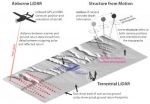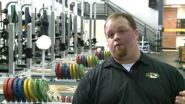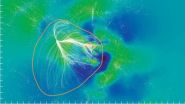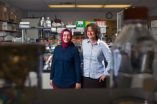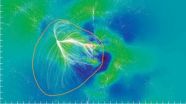(Press-News.org) Completing tasks and crossing them off the ubiquitous "to-do" list is a great feeling. But what about those nagging tasks we keep putting off? What's the difference between those jobs that get completed and those that do not?
The answer may be our perception of time, according to new research by Yanping Tu, a doctoral candidate at the University of Chicago's Booth School of Business.
The study, "The Categorization of Time and Its Impact on Task Initiation," recently published in the Journal of Consumer Research, finds that people are more likely to begin a job when, from a time perspective, it appears to be part of the present. On the other hand, they are less likely to start work on assignments that seem to be part of the future.
"The key step in getting things done is getting started. If you never get started, you can't possibly finish," Tu explains. "But that urgency, that need to actually work on a task, happens when that task is seen as part of a person's present."
Tu and her coauthor, Dilip Soman of the University of Toronto's Rotman School of Management, conducted a series of studies to support their theory. For example, in one study, 100 undergraduates were told that they had five days in which to complete a four-hour data entry assignment. This assignment was made at the end of April, and those who were assigned the task on April 24th or 25th and had to finish by the 29th or 30th were more likely to begin work than those who were assigned on the 28th and told they needed to finish in the first few days of May. The change in month provided a barrier to the students that made the task seem less like it was part of the present and more like it was part of the future.
"We have shown how goals are perceived in time is clearly linked to people's views of when and whether to begin work," Tu adds. "It would be interesting to look at how these temporal views affect other aspects of success, such persistence in completing jobs and the quality of a job done."
INFORMATION:
Trouble starting a task? Perception of time may be the problem, study finds
2014-09-03
ELSE PRESS RELEASES FROM THIS DATE:
How much gravity is enough?
2014-09-03
TORONTO, September 3, 2014 – Keeping upright in a low-gravity environment is not easy, and NASA documents abound with examples of astronauts falling on the lunar surface. Now, a new study by an international team of researchers led by York University professors Laurence Harris and Michael Jenkin, published today in PLOS ONE, suggests that the reason for all these moon mishaps might be because its gravity isn't sufficient to provide astronauts with unambiguous information on which way is "up".
"The perception of the relative orientation of oneself and the world is important ...
Team develops new, inexpensive method for understanding earthquake topography
2014-09-03
Boulder, Colo., USA – Using high-resolution topography models not available in the past, geologists can greatly enrich their research. However, current methods of acquisition are costly and require trained personnel with high-tech, cumbersome equipment. In light of this, Kendra Johnson and colleagues have developed a new system that takes advantage of affordable, user-friendly equipment and software to produce topography data over small, sparsely vegetated sites at comparable (or better) resolution and accuracy to standard methods.
Their workflow is based on structure ...
Study sets guideline for determining effectiveness of college football training methods
2014-09-03
VIDEO:
Athletic performance varies from day to day, which can make it difficult for strength and conditioning professionals to judge whether athletes' improvements are due to effective training. Now, University of...
Click here for more information.
COLUMBIA, Mo. –Athletic performance varies from day to day, which can make it difficult for strength and conditioning professionals to judge whether athletes' improvements are due to effective training. Now, University of Missouri ...
NIH-led scientists discover HIV antibody that binds to novel target on virus
2014-09-03
WHAT:
An NIH-led team of scientists has discovered a new vulnerability in the armor of HIV that a vaccine, other preventive regimen or treatment could exploit. The site straddles two proteins, gp41 and gp120, that jut out of the virus and augments other known places where broadly neutralizing antibodies (bNAbs) bind to HIV. This newly identified site on the viral spike is where a new antibody found by the scientists in an HIV-infected person binds to the virus. Called 35O22, the antibody prevents 62 percent of known HIV strains from infecting cells in the laboratory and ...
Hawaii scientist maps, names Laniakea, our home supercluster of galaxies
2014-09-03
University of Hawaii at Manoa astronomer R. Brent Tully, who recently shared the 2014 Gruber Cosmology Prize and the 2014 Victor Ambartsumian International Prize, has led an international team of astronomers in defining the contours of the immense supercluster of galaxies containing our own Milky Way. They have named the supercluster "Laniakea," meaning "immense heaven" in Hawaiian. The paper explaining this work is the cover story of the September 4 issue of the prestigious journal Nature.
Galaxies are not distributed randomly throughout the universe. Instead, they are ...
Sequencing of 5 African fishes reveals diverse molecular mechanisms underlying evolution
2014-09-03
Cambridge, MA. Wed. September 3, 2014 — In an effort to understand the molecular basis of adaptation in vertebrates, researchers sequenced the genomes and transcriptomes of five species of African cichlid fishes. A research team led by scientists at the Broad Institute of MIT and Harvard uncovered a variety of features in the cichlid genomes that enabled the fishes to thrive in new habitats and ecological niches within the Great Lakes of East Africa. In addition to helping explain the complex genomic mechanisms that give rise to incredible diversity among cichlid fishes, ...
Airlock-like transport protein structure discovered
2014-09-03
Palo Alto, CA—Sugars are an essential source of energy for microrganisms, animals and humans. They are produced by plants, which convert energy from sunlight into chemical energy in the form of sugars through photosynthesis.
These sugars are taken up into cells, no matter whether these are bacteria, yeast, human cells or plant cells, by proteins that create sugar-specific pores in the membrane that surrounds a cell. These transport proteins are thus essential in all organisms. It is not surprising that the transporters of humans and plants are very similar since they ...
Carbon stored in the world's soils more vulnerable to climate change than expected
2014-09-03
The response of soil microbial communities to changes in temperature increases the potential for more carbon dioxide to be released from the world's soils as global temperatures rise, scientists have revealed.
The potential for global warming to stimulate decomposition rates in soils, and thus release large quantities of carbon dioxide to the atmosphere, has long been considered to be one of the potentially most important positive feedbacks to climate change. However, the results from more recent studies have suggested that responses within microbial communities could ...
Study shows cellular RNA can template DNA repair in yeast
2014-09-03
The ability to accurately repair DNA damaged by spontaneous errors, oxidation or mutagens is crucial to the survival of cells. This repair is normally accomplished by using an identical or homologous intact sequence of DNA, but scientists have now shown that RNA produced within cells of a common budding yeast can serve as a template for repairing the most devastating DNA damage – a break in both strands of a DNA helix.
Earlier research had shown that synthetic RNA oligonucleotides introduced into cells could help repair DNA breaks, but the new study is believed to be ...
Newly identified galactic supercluster is home to the Milky Way
2014-09-03
Astronomers using the National Science Foundation's Green Bank Telescope (GBT) -- among other telescopes -- have determined that our own Milky Way galaxy is part of a newly identified ginormous supercluster of galaxies, which they have dubbed "Laniakea," which means "immense heaven" in Hawaiian.
This discovery clarifies the boundaries of our galactic neighborhood and establishes previously unrecognized linkages among various galaxy clusters in the local Universe.
"We have finally established the contours that define the supercluster of galaxies we can call home," said ...
